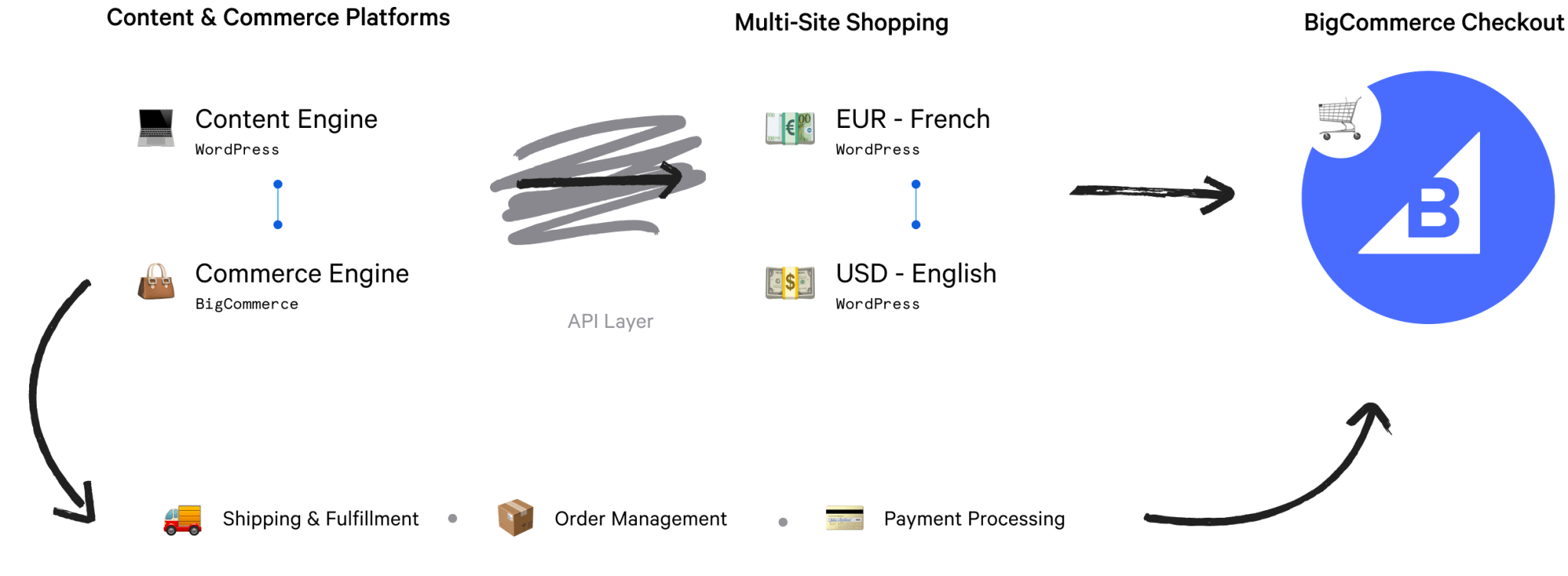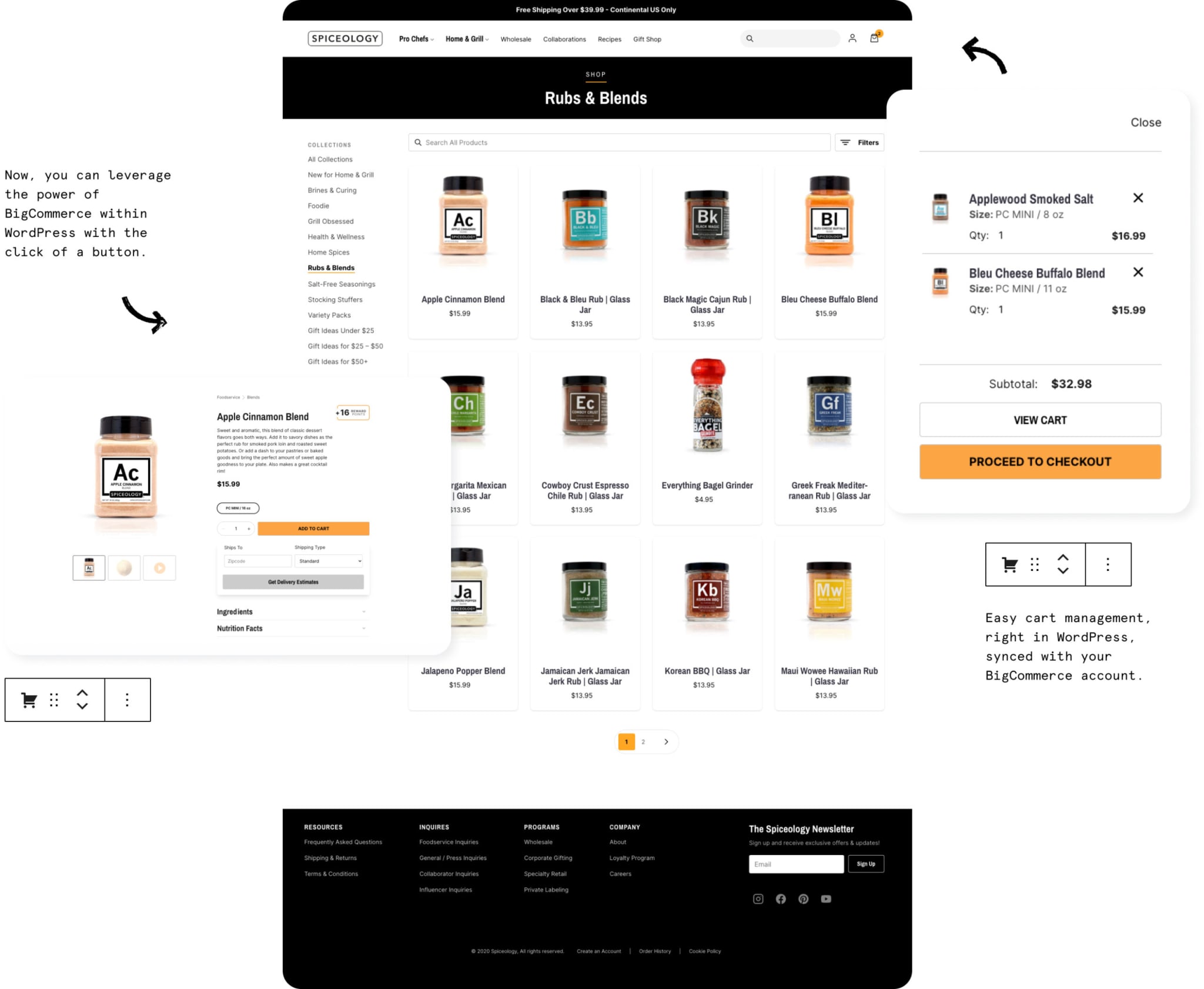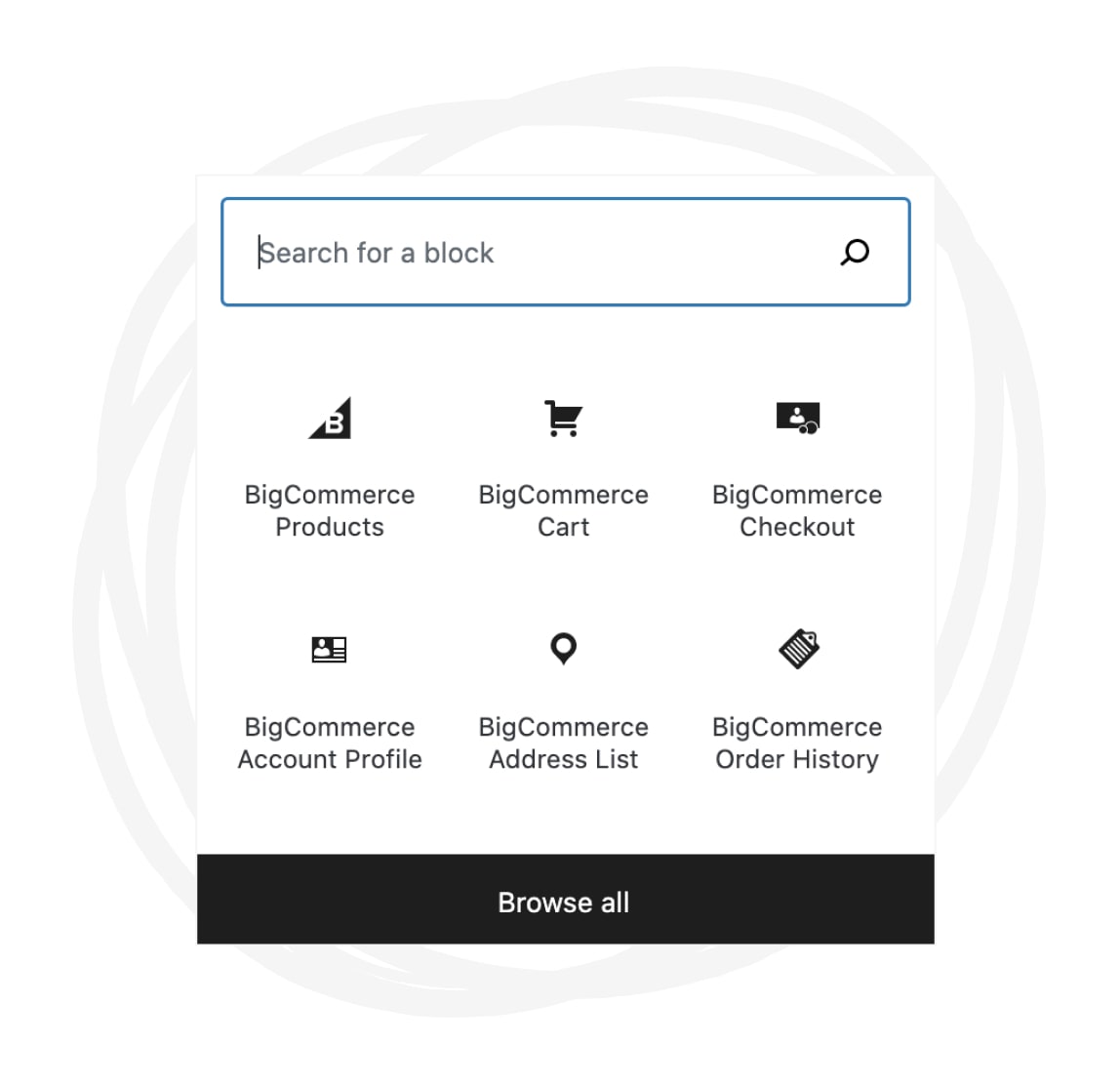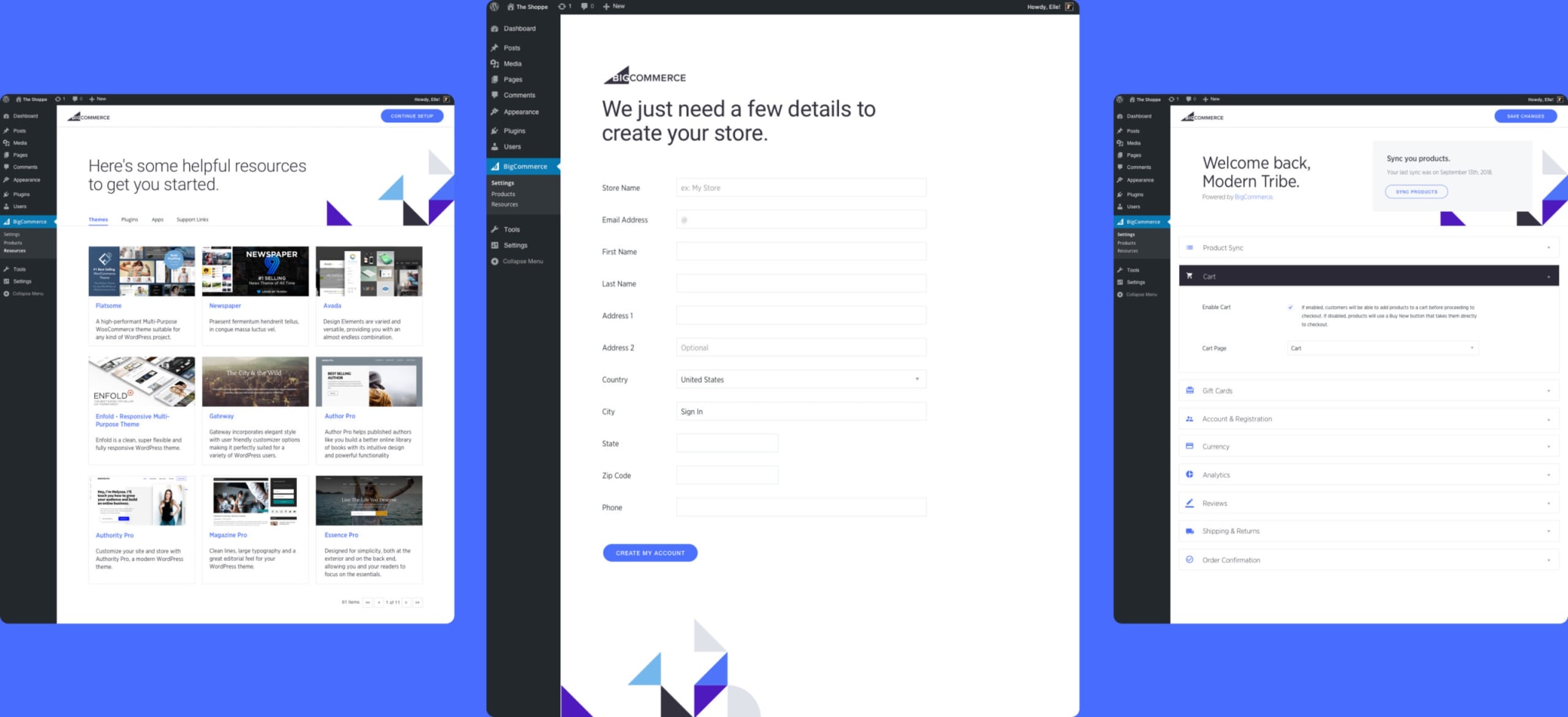BigCommerce
How we helped BigCommerce grow their reach with a headless solution for the WordPress community
The challenge
Brands that sell online had access to great ecommerce platforms, like BigCommerce, and they had access to great content management systems. But the two tools often didn’t play well together or make each other better.
The Solution
Leverage the power of BigCommerce and the scope and reach of WordPress to create a fully-featured plugin that prioritizes user choice and embraces open-source philosophy. This way, more brands can integrate BigCommerce solutions into their core platform.

The birth of BigCommerce
for WordPress
Brands with online stores built on an ecommerce platform have had pretty unappealing solutions for managing a large product portfolio or using content to support sales: a separate ecommerce site, which splinters the buying experience, and simplistic widgets that don’t speak to the sophistication of their brand.
BigCommerce envisioned a new solution that would merge the simplicity and reliability of a robust SaaS tool with the flexibility and customization of an open-source plugin, and they tapped us to help shape it and bring it to life.

Building something bigger
With access to a team ready to move fast, BigCommerce strategically requested a minimum viable product. From roadmapping to initial launch, we dropped a beta version for developers within 10 months, ultimately releasing the public version in time for a WordCamp US debut one month later.

Scaling fast
For early proof of concept, our mission was very focused: pull product data from the BigCommerce catalog and inject it into a WordPress page with a “buy now” button. But the deeper we got into the process, the longer the feature list became.
We soon realized we could create a true end-to-end ecommerce experience that lets buyers complete an entire transaction within a WordPress site. Another major plugin could facilitate this—but not with the scale, performance, and stability of the BigCommerce platform behind it.
Breaking down barriers and simplyfing installation
The biggest hurdle to adoption was the merchant onboarding experience. It was a complex process with a series of steps for installing the plugin and connecting to their BigCommerce product catalog. For version 2.0 of the plugin, we automated onboarding.
The middleware app runs merchants through a series of questions about how they’re using the plugin, and they just check the appropriate boxes. Now, connecting a merchant’s entire existing catalog takes just a single click. Then the app generates and fetches the API keys and connects the store database automatically.

Related Case Studies
Harvard University
A design-forward website gives Harvard the ability to weave a compelling narrative around the university’s community, academics, and research.
Promoter
This automated email marketing tool helps event planners strategically communicate with attendees in the days leading up to, and after, an event.
Tuniversity
Remix tracks or lay down your own song in an iBook custom built to make students in Pharrell’s high-impact music education program happy.


